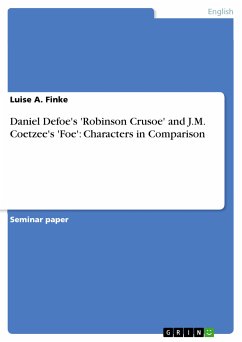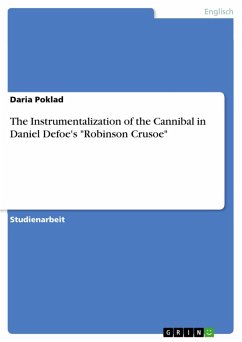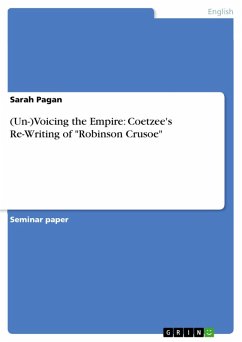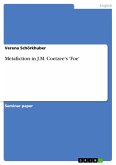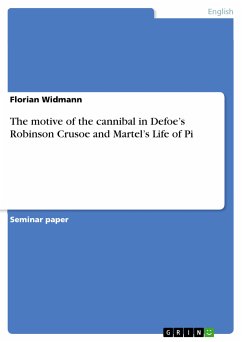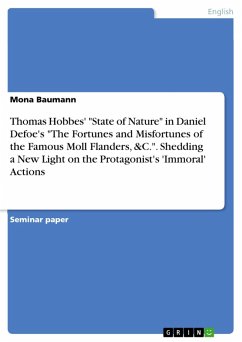Seminar paper from the year 1998 in the subject English Language and Literature Studies - Literature, grade: 1,3 (A), University of Leipzig (Institute for Anglistics), course: Postcolonial Literatures, language: English, abstract: J. M. Coetzee's 1986 novel Foe leaves its reader in a tumble of a multi-layered reality, confused about literary original and copy, and, maybe most grave, confronted with the question: what is historical truth and how can it be recognised. The veils that unfold and reveal the facets of fiction and reality through the novel are many, and they are intricately woven into each other. We, the readers, however educated and experienced with fictional texts, may find ourselves slightly confused after a first reading. Coetzee has written a parody1 of a classic of world literature: Daniel Defoe's Robinson Crusoe, first published in 17192. The simple fact that Coetzee's work of fiction was first published in 19863 makes it evident that it was based on the older classic. Yet the content of the novel claims the very opposite when the female protagonist Susan Barton tells how the story really was before Mr Foe sat down to turn it into a novel of his own intentions, altering and falsifying it. She tells her own story in the Iperspective, in terms of the 'plot' even before the writer Mr Foe would have completed his 'Robinson Crusoe'. Through this, Coetzee creates the illusion that Susan Barton's report might have indeed been the antecessor of the literary classic Robinson Crusoe. Nevertheless, we are talking of a work of fiction here, so there is no doubt that Coetzee marvellously plays with the means of storytelling instead of telling the world 'how it all really was'. There is no such Robinson Crusoe as depicted both in Defoe's and Coetzee's novel - there is merely fiction, and one should not confuse fiction and reality, however many layers of both seem to be mingled into each other in Coetzee's novel. 1 A parody according to Linda Hutcheon is an: "imitation characterised by ironic inversion", or "repetition with critical distance, which marks difference rather than simularity"; in: Linda Hutcheon, A Theory of Parody: The Teachings of Twentieth-Century Art Forms. New York and London: Methuen, 1985, p.6 2 See: Bibliographical Note; in: Daniel Defoe, Robinson Crusoe. London: Dent, 1975, p. xiii 3 First published in Great Britain by Martin Secker & Warburg 1986; here it will be referred to the Penguin paperback edition of 1987 when quoting passages from the text.

